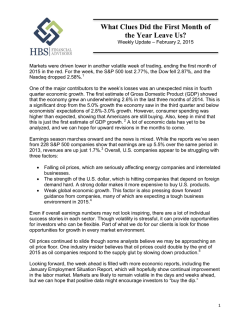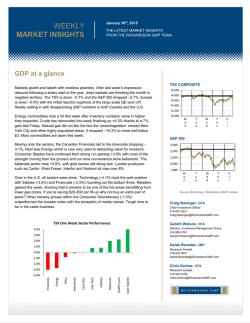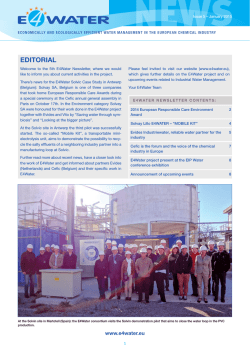
Dow Corning CY 52-276
Product Information Gels Dow Corning® CY 52-276 2-part, clear, 1:1 mix ratio, gel with controlled volatility FEATURES • • Low temperature cure Controlled silicone volatility BENEFITS • • Low temperature cure for faster processing speeds Reduced potential for silicone volatiles TYPICAL PROPERTIES Specification Writers: Please contact your local Dow Corning sales office or your Global Dow Corning Connection before writing specifications on this product. Property Viscosity (Part A or Base) Unit cP mPa-sec Pa-sec Value 975 975 1 Viscosity (Part B or Catalyst) cP mPa-sec Pa-sec 825 825 0.8 Gel Hardness grams 70 Penetration 1/10 mm 75 Working Time at 25ºC (Pot Life hours) Heat Cure Time @ 70ºC hr 0.5 minutes 30 Content of Low Molecular Siloxane (D4-D10) Dielectric Strength ppm 70 volts/mil kV/mm 350 14 Dielectric Constant at 1 MHz - 2.5 Volume Resistivity ohm*cm 1.0 E+15 Dissipation Factor at 100 hz - 0.0001 Dissipation Factor at 100 kHz - 0.0001 Shelf Life at 25ºC months 18 APPLICATION METHODS • Automated meter mixing DESCRIPTION This group of gels addresses special needs to enable your designs in a reliable and cost effective manner. This family include thixotropic gels that provide controlled flow, fluorogels with resistance to some solvents and fuels, controlled volatility gels for sensitive applications, and uv curing gels for very fast and low temperature cure. Gels are a special class of encapsulants that cure to an extremely soft material. Gels cure in place to form cushioning, self-healing, resilient materials. Cured gels retain much of the stress relief and selfhealing qualities of a liquid while providing the dimensional stability of an elastomer which is increasingly needed for delicate components. Gels have been used to isolate circuits from the harmful effects of moisture and other contaminants and provide electrical insulation for high voltages. Another use is providing stress relief to protect circuits and interconnections from thermal and mechanical stresses. Gels are usually applied in thick layers to totally encapsulate higher architectures. More recently, gels have found application in optoelectronics due to their stress relieving capability and high refractive index, as well as the stability of these properties over time. MIXING AND DE-AIRING Some gels are supplied in bladder packs that avoid direct air contact with the liquid gel components, allowing use of air pressure over the pack in a pressure pot for dispensing. Do not apply air pressure directly to the liquid gel surface (without the bladder pack) as the gel can become supersaturated with air and bubbling can occur when the material is dispensed and cured. Use of bladder packs prevents bubbling, maintains cleanliness and avoids gel contamination. Gels can be dispensed manually or by using one of the available types of meter mix equipment. If possible, the potential for entrapment and incorporation of gas (typically air) should be considered during design of the part and selection of a process to dispense the gel. This is especially important with higher-viscosity and fastercuring gels. Degassing at >28 inches (10-20 mm) Hg vacuum may be necessary to ensure a void-free, protective layer. USEFUL TEMPERATURE RANGES For most uses, silicone elastomers should be operational over a temperature range of -45 to 200°C (49 to 392°F) for long periods of time. However, at both the low- and high temperature ends of the spectrum, behavior of the materials and performance in particular applications can become more complex and require additional considerations. For low-temperature performance, thermal cycling to conditions such as -55°C (-67°F) may be possible, but performance should be verified for your parts or assemblies. Factors that may influence performance are configuration and stress sensitivity of components, cooling rates and hold times, and prior temperature history. At the high-temperature end, the durability of the cured silicone elastomer is time and temperature dependent. As expected, the higher the temperature, the shorter the time the material will remain useable. COMPATIBILITY Certain materials, chemicals, curing agents and plasticizers can inhibit the cure of addition cure adhesives. Most notable of these include: Organotin and other organometallic compounds, Silicone rubber containing organotin catalyst, Sulfur, polysulfides, polysulfones or other sulfur containing materials, unsaturated hydrocarbon plasitcizers, and some solder flux residues. If a substrate or material is questionable with respect to potentially causing inhibition of cure, it is recommended that a small scale compatibility test be run to ascertain suitability in a given application. The presence of liquid or uncured product at the interface between the questionable substrate and the cured gel indicates incompatibility and inhibition of cure. REPAIRABILITY In the manufacture of electronic devices, salvage or rework of damaged or defective units is often required. Removal of Dow Corning dielectric gels to allow necessary repairs can be assisted by using Dow Corning® OS Fluids. Additional information regarding these products is available from Dow Corning. Digestive stripping agents, such as SU100 from Silicones Unlimited, can also be used. In addition, if only one component needs to be replaced, a soldering iron may be applied directly through the gel to remove the component. After work has been completed, the repaired area should be cleaned with forced air or a brush, dried, and patched with additional silicone gel. PACKAGING In general, Dow Corning dielectric gels are available in batch-matched kits containing both Part A and Part B components. Packages that are typically available include 210-mL dual cartridges, one-gallon pails, fivegallon pails and 55-gallon drums. Not all gels may be available in all packages, and some additional packages and package sizes may be available. STORAGE AND SHELF LIFE Storage conditions and shelf life (“Use By” date) are indicated on the product label. HEALTH AND ENVIRONMENTAL INFORMATION To support customers in their product safety needs, Dow Corning has an extensive Product Stewardship organization and a team of Product Safety and Regulatory Compliance (PS&RC) specialists available in each area. For further information, please see our website, www.dowcorning.com, or consult your local Dow Corning representative. LIMITATIONS These products are neither tested nor represented as suitable for medical or pharmaceutical uses. LIMITED WARRANTY INFORMATION PLEASE READ CAREFULLY The information contained herein is offered in good faith and is believed to be accurate. However, because conditions and methods of use of our products are beyond our control, this information should not be used in substitution for customer’s tests to ensure that Dow Corning’s products are safe, effective, and fully satisfactory for the intended end use. Suggestions of use shall not be taken as inducements to infringe any patent. Dow Corning’s sole warranty is that the product will meet the Dow Corning sales specifications in effect at the time of shipment. Your exclusive remedy for breach of such warranty is limited to refund of purchase price or replacement of any product shown to be other than as warranted. DOW CORNING SPECIFICALLY DISCLAIMS ANY OTHER EXPRESS OR IMPLIED WARRANTY OF FITNESS FOR A PARTICULAR PURPOSE OR MERCHANTABILITY. DOW CORNING DISCLAIMS LIABILITY FOR ANY INCIDENTAL OR CONSEQUENTIAL DAMAGES. FROM YOUR DOW CORNING REPRESENTATIVE, OR DISTRIBUTOR, OR BY CALLING YOUR GLOBAL DOW CORNING CONNECTION. For More Information To learn more about these and other products available from Dow Corning, please visit the Dow Corning Electronics website at www.dowcorning.com/ electronics. SAFE HANDLING INFORMATION PRODUCT SAFETY INFORMATION REQUIRED FOR SAFE USE IS NOT INCLUDED IN THIS DOCUMENT. BEFORE HANDLING, READ PRODUCT AND MATERIAL SAFETY DATA SHEETS AND CONTAINER LABELS FOR SAFE USE, PHYSICAL AND HEALTH HAZARD INFORMATION. THE MATERIAL SAFETY DATA SHEET IS AVAILABLE ON THE DOW CORNING WEBSITE AT WWW.DOWCORNING.COM, OR Dow Corning and Sylgard are registered trademarks of Dow Corning Corporation. All other trademarks or brand names are the property of their respective owners. ©2006 Dow Corning Corporation. All rights reserved. Printed in USA Form No. 11-1242A-01
© Copyright 2024






